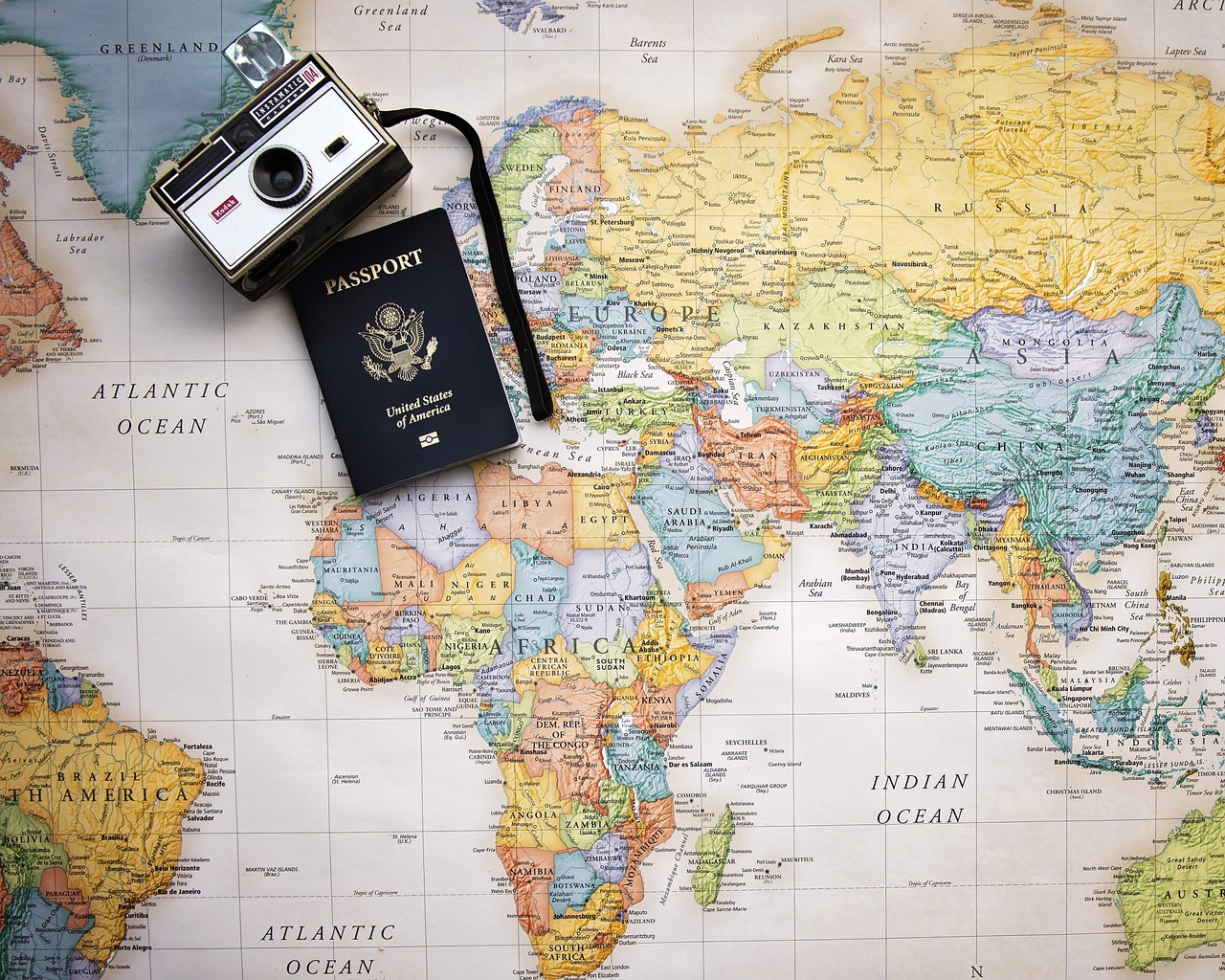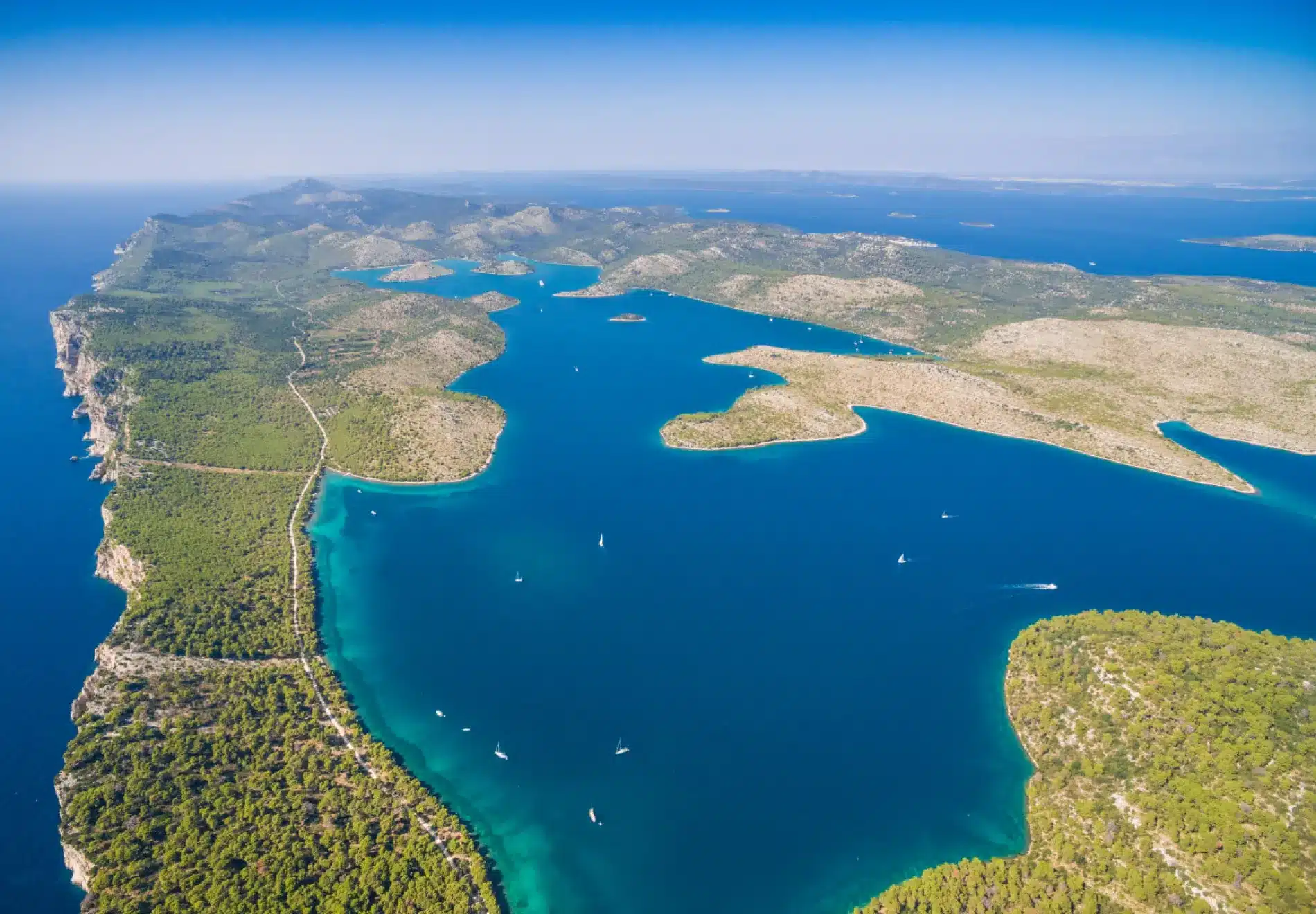Do you want an activity that takes place outside, refreshes you, and provides spectacular views? If that’s the case, then hiking in Europe during the winter is what you should be doing. Your next winter trek might take you anywhere from the snow-covered summits of Switzerland to the stunning splendor of Poland; there is no lack of intriguing and gorgeous places to choose from.
Whether you’ve been hiking for years or are just starting, Europe is home to some of the world’s most excellent routes, ensuring that your excursion will be both pleasurable and memorable. So put on your coat and go to one of these fantastic European hiking destinations during winter.
Circular hike around Lake Bohinj, Slovenia
Lake Bohinj hiking is simple in summer but difficult in winter. Typically, a circular trek around a 12 km lake takes 3-4 hours. Winter’s snowy landscape requires additional time. Despite being flat, snow will wear you out.
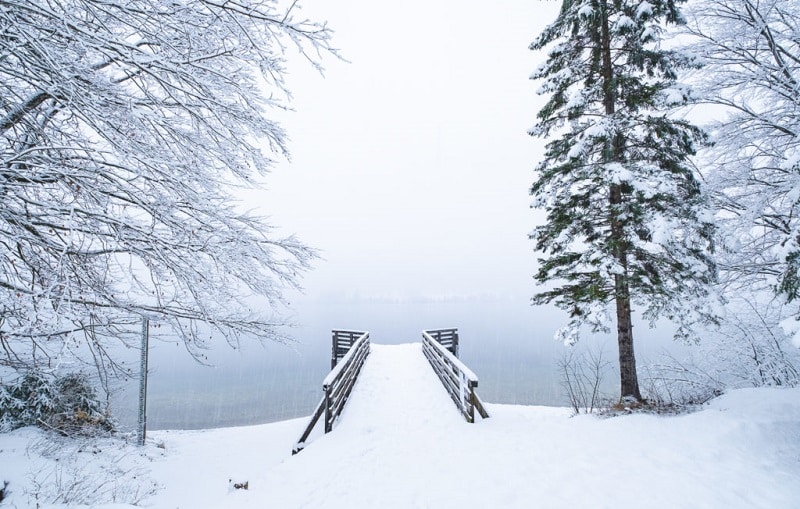
Winter Lake Bohinj Circumference Trail requires waterproof footwear with ankle support. Only the major route from Ribcev Laz to Ukanc is cleared of snow. Snow-covered trees and ground make the path lovely in winter. Few people stroll around the lake, so it’s serene.
Val Lumnezia hike, Switzerland
Val Lumnezia is called the Valley of Light since it’s sunny year-round. The valley draws outdoor enthusiasts worldwide. The area’s hiking routes are lovely when snow covers the ground and mountains. The Cumbel – Morissen–Cumber winter hiking path is snow-covered from December to March.
The track is well-maintained, hardened, and easy to walk on, even with snow. It explores beautiful Swiss communities like Morissen, noted for its carved chalets and begins at Cumbel. Only snow boots are required. There are seats along the path to rest and enjoy the view. The track is generally open, although a brief stretch follows a creek through the forest. This 7.5-kilometer climb gains 255 meters. It should take 2-3 hours to complete the course.
Vilan peak, Switzerland
To avoid the crowd, choose your route up a mountain using winter equipment. Snowshoes and touring skis expand winter hiking routes—for example, this summer and winter trip to 2375-meter-high Vilan Mountain. Snowshoeing 12 kilometers and 1400 meters take 5-6 hours. Technically accessible, but requires strong fitness and snowshoe or touring ski expertise. The journey from Seewis to Vilan peak provides excellent views.
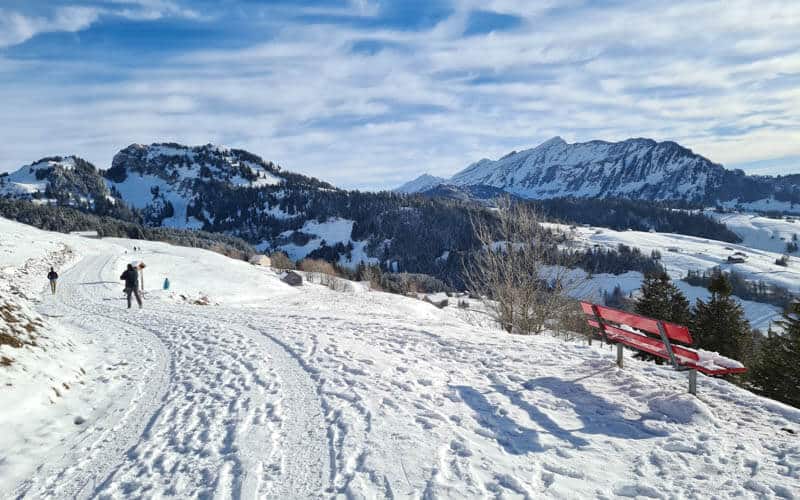
Once on top, you can view Churfirsten and 4046-meter Piz Bernina. Park at the village entrance and stroll through the homes to open fields toward Fallider and Wurzaneina. Ski tracks are abundant. Follow the woodland road east from Wurzaneina until you reach an upward sign. Through the woods, approach Sadreinegg’s cottages (1893 masl).
Climb eastward to a cairn. From there, the ridge swings southeast, and you reach Vilan. You may retrace your steps or select the steeper south approach, which begins at the cairn you passed on the way up. Winter tours include risks. Check the avalanche prediction and bring avalanche rescue equipment.
Seven Lakes and Ivan Vazov Hut hike, Rila mountains, Bulgaria
Sofia, Bulgaria’s capital, draws many international visitors with its stunning Black Sea beaches. Bulgaria’s mountains are regularly blanketed with snow from December through March. Winter paths are plentiful. It takes 1-2 hours to trek up. The 7 Lakes and Ivan Vazov Hut are designated treks. However, the signs may not be visible in snow or low cloud cover. Check the weather and bring a map and compass if you need to travel.
The turquoise and green lakes looked stunning against the snow-covered surroundings. However, they may stay frozen for most of the winter. A 4-5-hour hike from the chairlift to the lakes is achievable on short snow days. Ivan Vazhov, Hut Level terrain, leads to the cabin. It’s a magnificent continuation of the ‘lakes walk’ with the surrounding mountains. Lakes between 2,000 and 2,500 meters in elevation don’t need much climbing. Deep snow made the journey difficult; snowshoes and walking poles might help.
Helvellyn in Lake District, England
Despite its moderate temperature, England has great winter mountains. Some sections of England regularly get snow in the winter, albeit it’s not assured like in other European nations. Lake District specifically. We like visiting the English fells. We love Lake District’s Helvellyn. Striding Edge and Swirral Edge from the east create Helvellyn an excellent grade 1 scramble.

This trek began at Glenridding. Lower land wasn’t covered in snow, but I saw snowy fells in the distance and knew winter was coming. I enjoyed the snow halfway to Striding Edge. Frost-covered rocky ridges offered snow and ice scrambling. You have at least 6 hours to hike this path comfortably, and it’s demanding/difficult in winter.
Paths on top of both edges are moderately exposed. Thus, I believe trekking Helvellyn through the ‘edges’ in winter is better appropriate for experienced hikers who are acquainted with using crampons and ice axes if required. However, if you’re not competent climbing in winter but want to hike on snow, you may approach Helvellyn from the west.
Wythburn or Highpark Wood are good starting sites. These 3.8-kilometer pathways with 770 meters of altitude are a more straightforward approach to reaching Helvellyn. Then, retrace your steps or return to Wythburn or Highpark Wood in Thirlmere. If you pick the second option, you’ll have to walk 6 miles to your vehicle.
Patscherkofel near Innsbruck, Austria
Some sections of Austria are a snowy paradise from December to April. The Austrian Alps are ski hotspots. Suppose you don’t ski. Austria’s winter wonderlands provide hiking and other activities. Innsbruck is a winter sports mecca with several ski resorts and hiking paths.
Patscherkofel mountain, near Igls and linked to Innsbruck by bus, is a popular hiking destination. Start your walk behind the Patscherkofel ski resort after descending in front of it. In February, the trail was snow-covered. We saw hikers wearing snowshoes, but our footwear was OK.
The trail is available year-round but is prepared for snow from December to April. The path to Patscherkofel passes through Europe’s most extensive pine forest. There are mountain eateries along the ski slope, so you don’t need to pack food. However, depending on the restaurant, you may need to cross ski paths.
Mogielnica peak in Beskid Wyspowy, Poland
Poland has warm summers and frigid winters. The farther south you travel in winter, the more snow you’ll see. Polish highlands are regularly covered in snow for months, even though winters were far colder and worse decades before. Poland’s southern mountains are just as gorgeous as the Tatras.

One of our favorite winter hikes is to Mogielica (1171 masl) through Rydza-migy (Chyszówka) Pass. This loop isn’t lengthy or challenging. Winter travel takes 3.5-4 hours.
It’s well-marked and passes through meadows and woodlands. Mogielica’s summit has a 22-meter viewing tower. Beskid Sdecki, Pieniny, Tatra, Gorce, Babia Góra, and other Beskid Wspowy peaks are seen. In good weather, one may view the Slovak Mala Fatra range. Gorgeous! Sunsets are memorable.
Czerwone Wierchy ridge, Western Tatra range, Poland
Walking a snow-covered mountain ridge is impressive. True of Western Tatra’s Czerwone Wierchy (Red Peaks). This magnificent stroll along the Polish-Slovak border offers 360° views of both nations’ mountains. Take a cable car to Kasprowy Wierch, then follow the ridge to Kopa Kondracka, Malolaczniak, Krzesanica, and Ciemniak.
The initial portion of the ridge trek is rough. So, be careful, particularly on ice rocks. Micro-spikes, poles, and ice axes may be beneficial. The 6.5-km Czerwone Wierchy ridge rises 600 meters. The descent from Ciemniak (final ridge top) to the bus station is 6.5 kilometers and about 1200 meters. Despite the lengthy and monotonous drop, winter choices are limited. If you have enough daylight, read our entry on Czerwone Wierchy for another route down.
Trebevic peak, Bosnia and Herzegovina
The western and central sections of Bosnia and Herzegovina are pretty hilly. These places get the most snow, allowing endless trekking, snowshoeing, and skiing. Sarajevo lies near several peaks, so we’re glad Sabina showed us the locals’ favorite walk.
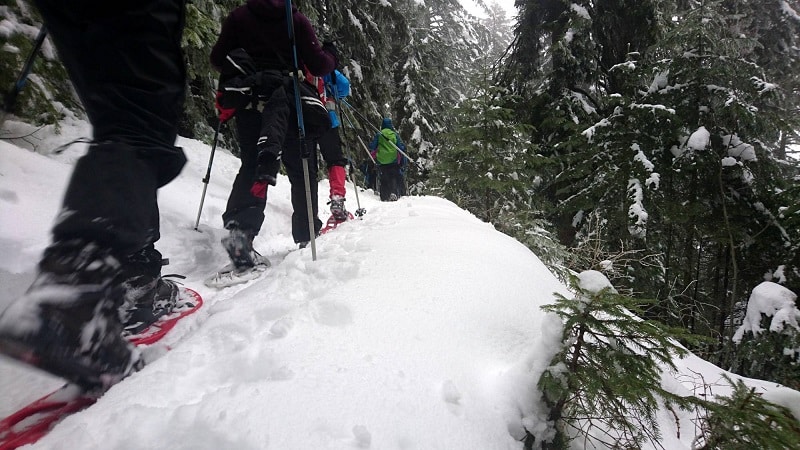
Trebevic is one of four Olympic mountains near Sarajevo. In 30 minutes, you may go from the city to a quiet pine forest. This mountain is car-free for hiking. The cable car from Sarajevo’s Old Town takes 10 minutes to the XIV Winter Olympics bobsleigh track. A well-marked hiking track leads from a cable car and Pino Nature Hotel to the summit of Trebevic. Every time I hike, it is the first.
The peak and ridge views are the most excellent part of the climb. The zig-zag route from the Pino Nature Hotel is the easiest. The trail descends from Trebevic (1,629 masl) down the western ridge to Jure Franko’s Mountain lodge. The cabin gives a beautiful view of Sarajevo and the neighboring mountains.
Mayar and Driesh, Cairngorms National Park, Scotland
Scotland’s terrain offers limitless winter hiking chances. You may discover a gorgeous winter walk in Scotland whether you’re a seasoned climber, hiker, or beginner. The Central Belt and islands don’t receive much snow, but the Highlands are incredible for winter sports.
Mayar and Driesh are two neighboring Munros 2 hours from Edinburgh. Due to its rounded, bump-like form, the pair is excellent for winter. The path begins at Glen Doll Ranger Centre and goes via Corrie Fee Nature Reserve. This rough mountain slope is Mayar and Driesh’s steepest portion. From Corrie Fee, you can view Mayar’s peak cone.
From Mayar, follow a large, sloping slope to Driesh. It’s largely downhill until you reach Driesh; then, you’ll confront a 200-meter uphill, but the most challenging part is over. Kindly retrace your steps to the foot of Driesh and descend Corrie Kilbo and a spruce grove to the parking park. Mayar and Driesh are top-notch. The hike offers great views of Glen Doll and Glen Clova in the Cairngorms National Park. Good weather makes snow simple to traverse.
Conclusion
Winter hiking in Europe can be an incredible experience, and there are plenty of unique destinations to explore. From the dramatic peaks of Norway to the rolling hills of Germany, nature lovers will find something to suit their tastes. So whether you’re looking for a cozy mountain cabin or a rugged adventure, these picks have something for everyone.

